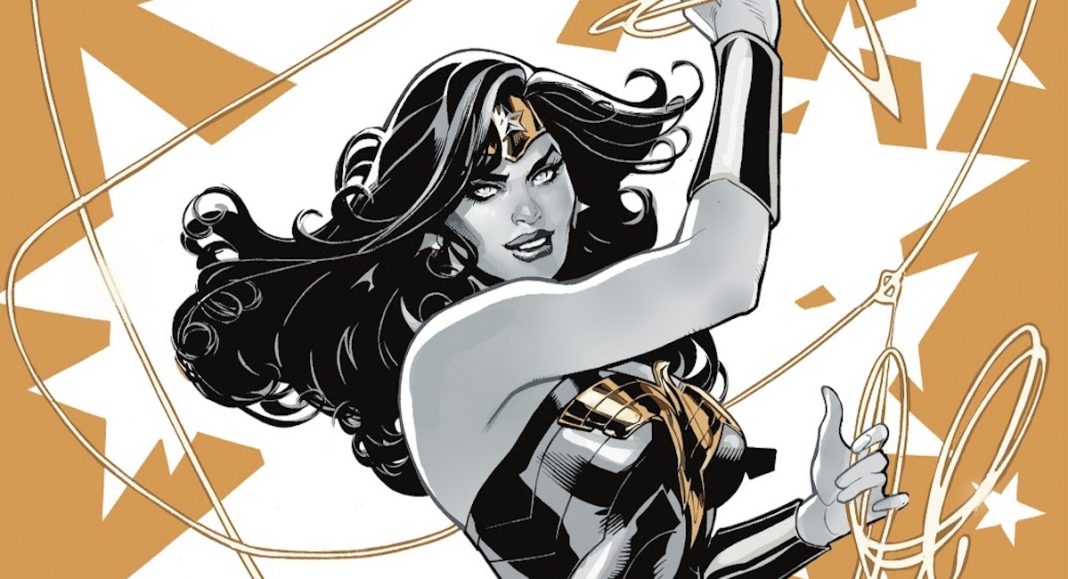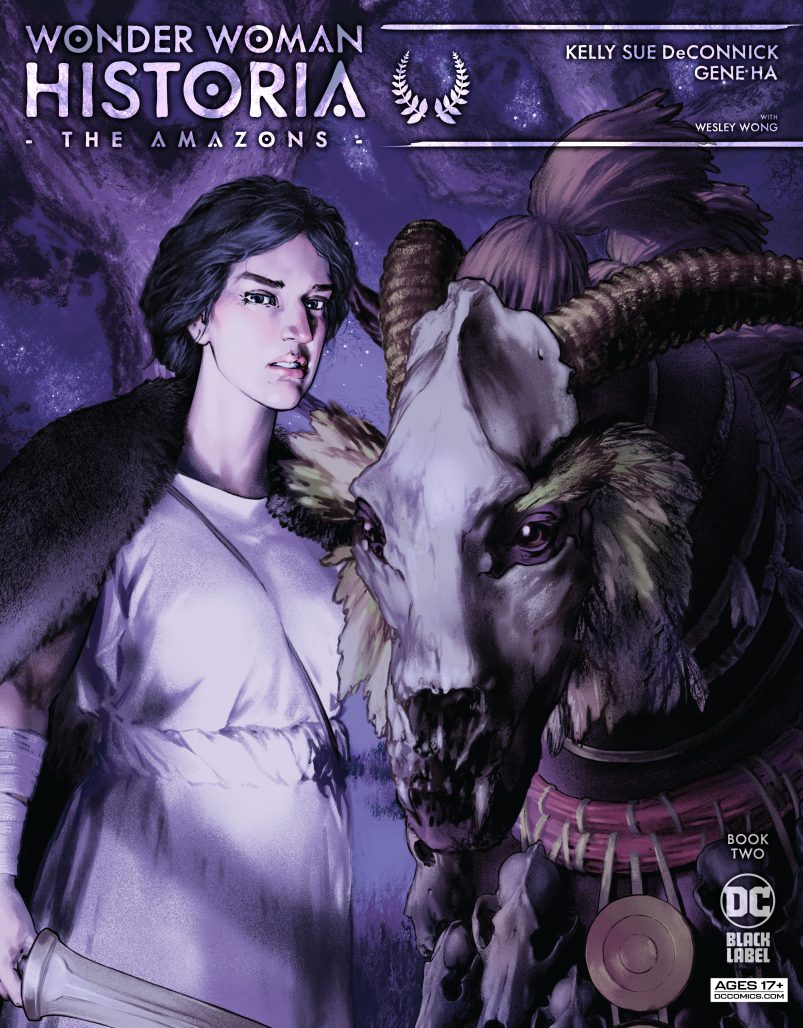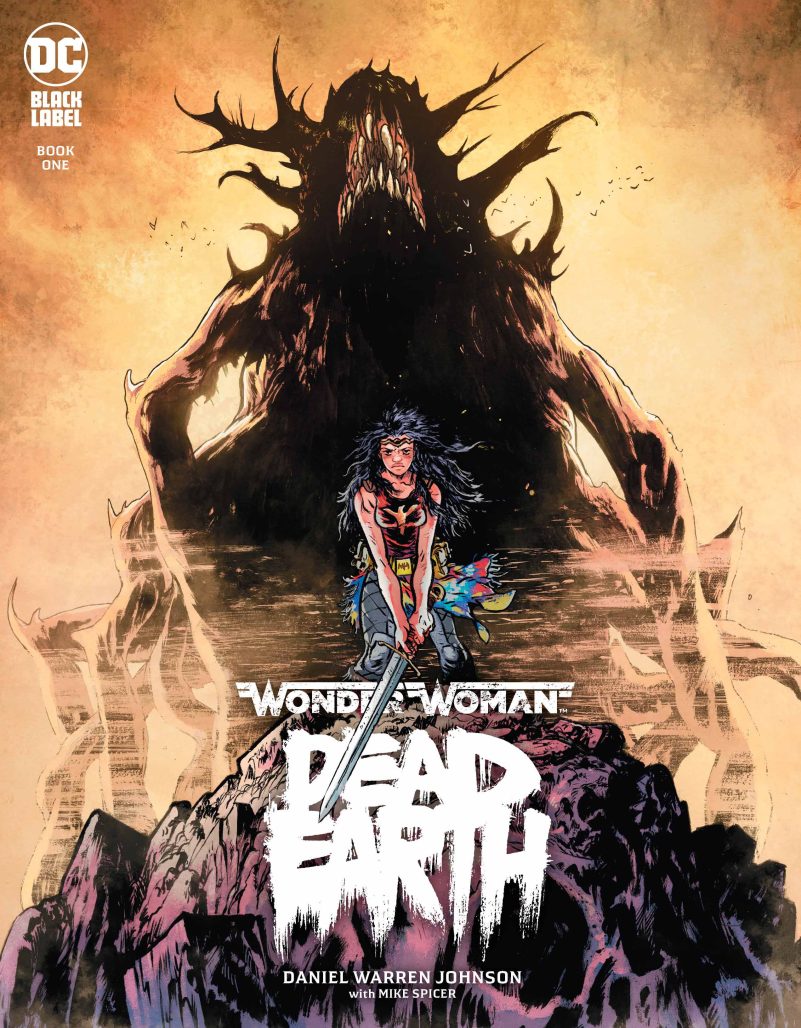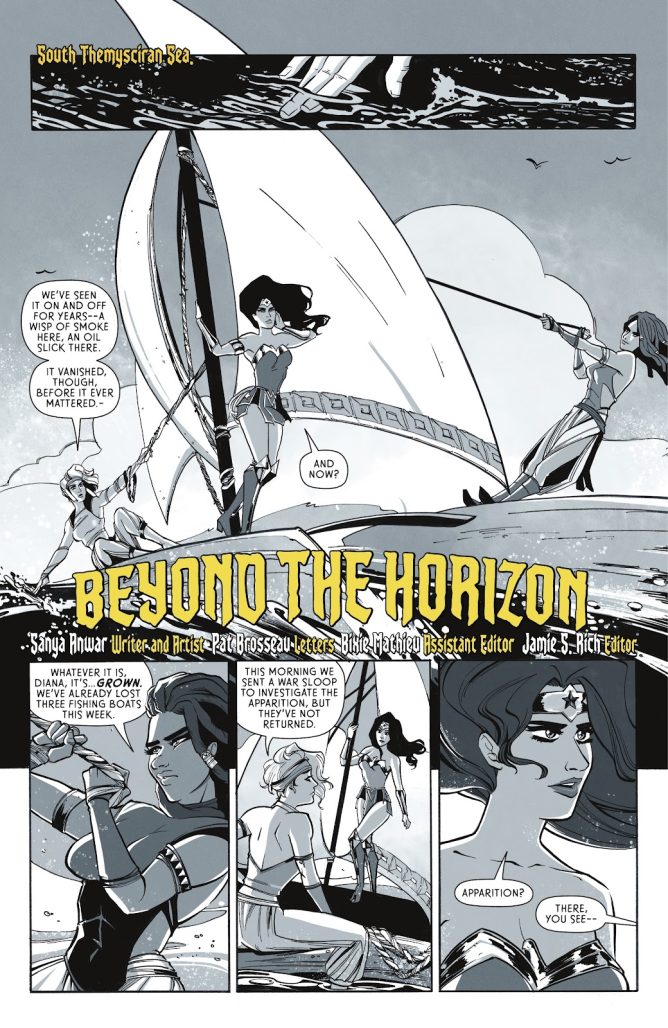While DC did not have an official presence at this weekend’s C2E2, one of the publisher’s most iconic characters was still in the spotlight as Saturday saw a panel dedicated to The Legacy and Importance of Wonder Woman. Among the panelists were a number of creators who have worked on the amazing Amazon and her world, including artist Gene Ha (Wonder Woman: Historia – The Amazons, Book Two), writer/artist Sanya Anwar (Sensational Wonder Woman, Wonder Woman: Black & Gold), artist Ashley Woods (Wonder Woman: Black & Gold), and writer/artist Daniel Warren Johnson (Wonder Woman: Dead Earth).
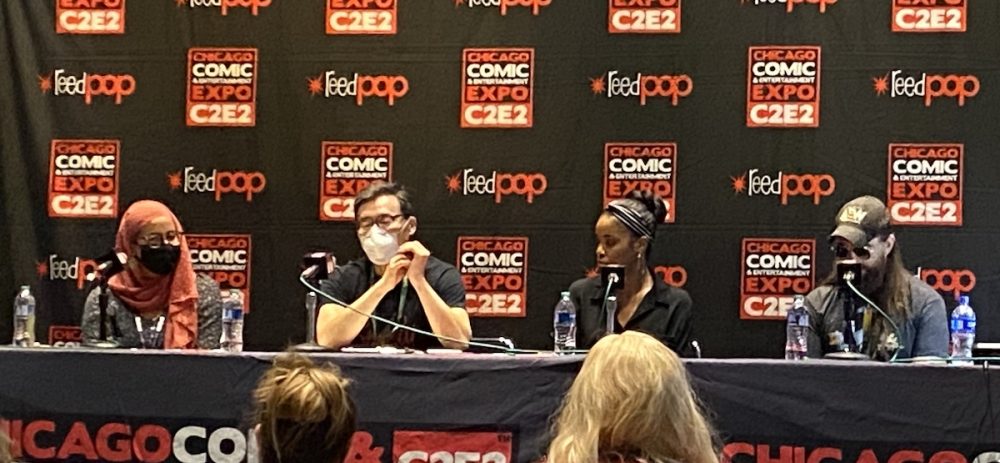
The moderator (who did not introduce himself) kicked off by thanking all of the panelists for their contributions to Wonder Woman, and asking them what their first exposure to the character was. Ha said his was Lynda Carter on TV when he was in elementary school. Woods inherited her older family members’ comics collections, which included plenty of Wonder Woman, and later she came to the TV series as well. Johnson recalled flipping through comics on the spinner rack in the late ‘90s, around when Superman had been split into Red and Blue, and seeing Wonder Woman on the racks, but that she was a character who was ‘always there’ in his mind. Anwar said she really fell in love with the character while researching her before writing her.
Asked if there was a Wonder Woman moment that sticks out to the panelists, Woods joked about remembering an issue of Justice League where all of the members of the League are tied up and Batman has to save them. More seriously, she noted that Wonder Woman’s powers are divine, whereas all the other characters have either alien powers or no powers at all. Ha said he loved the early Wonder Woman stories of the ‘40s, in particular the weird, whimsical history of the character and bondage in particular. Anwar said she really likes the movies and that Gal Gadot brought the character to life really well, which made her even more interested in learning about the character’s backstory. The moderator noted how Gadot has taken on the role of Wonder Woman not just on film but as a responsibility in the real world. Ha said Gadot is ‘not a great dramatic actor for a lot of roles,’ but that she captures Wonder Woman’s complexity well. Johnson echoed Anwar’s answer as well.
At this point in the panel, Ha hopped off the stage and presented a fan with a quick sketch he’d drawn of her because he liked her sunglasses. He also took a photo of another attendee so that he could draw them. This is something Ha does on panels pretty regularly, and which he did a number of times during this panel.
Asked about Diana’s appeal, Woods noted that Wonder Woman first appeared around the same time that women were entering the workforce during World War II, and that they could see themselves in the character of Wonder Woman. Anwar suggested that part of her staying power was in contrast to other female characters at the time, who were sort of ‘cute but earnest,’ whereas Wonder Woman brought ‘competence and dignity’ that appealed and still appeals to men as well as women. Ha added that William Moulton Marston and H.G. Peter envisioned Wonder Woman as being primarily for young boys and wanted to create a character who could improve their perceptions of the opposite sex, and that they were stunned when they learned young girls loved Wonder Woman as well. Johnson said he likes that Diana comes from a place where everything is perfect, and that she brings some of that with her into the greater world, noting her ability to express herself and her emotions unflinchingly. The moderator added that he didn’t like how the character has changed more recently to being more of a violent warrior, and that he wishes DC would bring back a little more of the lightness and compassion to the character. Anwar seconded that, saying that Diana’s radical compassion and tenderness is what makes her unique.
Discussion turned to Wonder Woman’s rogues gallery. The moderator praised characters like Ares and Circe, and Johnson sighed and said that, when he was working on Dead Earth, he was really bored by Diana’s villains, so he changed them for his story, in particular giving Cheetah a literal cheetah hand, something he didn’t mention to his editor until he turned in the artwork. Outside of the rogues, Woods said she’s interested in Nubia and digging into that character’s backstory. Ha said that as long as Wonder Woman is written well he doesn’t really care about the villains, and Anwar concurred that Diana’s rogues gallery isn’t the strongest. She said she wishes the stories would lean even further into the Greek mythology, which is ‘insane’ and ‘bizarre,’ and the moderator noted that George Pérez’s work on the character did do that. Woods suggested remaking Wonder Woman in the vein of God of War, and Johnson laughed and said that’s what he did in Dead Earth. Anwar also noted that it would be fun to see what Wonder Woman was up to throughout history outside of just world wars, for example during the Industrial Revolution or the French Revolution.
Asked about bridging the gap between Wonder Woman as an icon and Wonder Woman as a character, Woods said she thought it was being done now with the movies, and suggested that making them more adult and violent and not ‘playing it safe’ would be interesting. Ha said the key to Wonder Woman on film is to make her feel real and idealistic and to not lean so heavily on CGI battles. He said Superman feels a lot of humility, Batman is about ‘faking it til you make it,’ and Wonder Woman is about ‘earned confidence.’ Batman bluffs really well, but Wonder Woman tries to raise up those around her to be as confident and special as she knows she is. Anwar said she thinks people want to see the emotional touchpoints for characters and how they overcome adversity, which can make characters like Superman, Batman, and Wonder Woman hard to relate to. Diana in particular never had a low point in her personal history, which Anwar and Ha both said the character needs to have in order to make her more relatable. Johnson praised DC editor Andy Khouri for going to bat for him to let him do whatever he wanted to do in Wonder Woman: Dead Earth. He said part of what’s amazing about the character is that her canvas is so vast, and that DC should let more creators just do whatever they want with her.
On the topic of highlights in working on the character, Woods said the script for her Black & Gold story from Stephanie Williams was a lot lighter than she expected it would be. She loved drawing the story, which featured Diana and Nubia in an ‘American Ninja Warrior’-style race, and in particular putting her own spin on Wonder Woman’s design. Ha said that following Phil Jimenez on Wonder Woman: Historia – The Amazons was one of the biggest challenges of his career, but incredibly rewarding. He said he had to adjust the ‘blurred background’ technique he had planned to use for the issue after reading Kelly Sue DeConnick’s script and realizing that the theme of the issue was that ‘every woman is important,’ which blurry background faces didn’t quite fit. Anwar said she loved both writing and drawing Wonder Woman, and joked that she would like to do more commissions of the character.
The floor was opened for questions, and an attendee asked about Wonder Woman’s relationship to Darkseid, who had come up earlier in the panel in relation to Batman. Ha argued that Wonder Woman would mop the floor with Darkseid, and the panel’s moderator reminded the crowd that in the mid-’80s Super Friends cartoons Darkseid was in love with Wonder Woman.
When did Diana become part of the Trinity? Woods said the cartoons of the ‘90s are when she started to recognize it personally. Johnson and Anwar deferred to Ha, who noted the comics implosion of the ‘50s as a result of McCarthyism and Frederic Wertham, where the only DC titles that survived were Superman, Batman, and Wonder Woman. It wasn’t until the ‘90s that she ‘officially’ became part of the Trinity in Kingdom Come, but her journey to get there started back in the ‘50s.
Another attendee asked what the creators would do if they could form a Wonder Woman-led superteam. Anwar said she wouldn’t pair her with any other current characters, and would instead pair her with other Amazons. Johnson started to riff on the idea, imagining an ‘A-Team’-esque team of Amazons who each have different special skills. Ha suggested Diana should form a ‘League of Extraordinary Gentlewomen’ made up of powerful women from other mythologies, and Johnson jokingly offered to give Ha DC editor-in-chief Marie Javins’s email address.
How do you address working on Wonder Woman as a non-American character? Johnson said he consciously tried to make her look different than she ever had before, particularly in the face and eyebrows, and that he got some pushback from DC on it. He continued to draw her the way he wanted to draw her, and said that people on Reddit complained about how she looked after the book was released. Woods said DC is fairly specific about how Wonder Woman has to look, and said she had to balance Diana’s ‘sexiness’ with her powerful build. Anwar said she would be interested to see the intersection of modern Greek culture and modern Greek American culture as part of the character, which is not something she’s ever seen happen before. Ha said he’s always seen her as part of the ‘Pre-Medieval Mediterranean culture,’ which encompassed a large part of the world at the time and saw people with a blend of features from around the world, including the aforementioned big eyebrows.
With that, the moderator thanked everyone for attending a discussion of Wonder Woman’s eyebrows, and the panel ended.
Miss any of our other C2E2 ’22 coverage? Check out all of it here!


